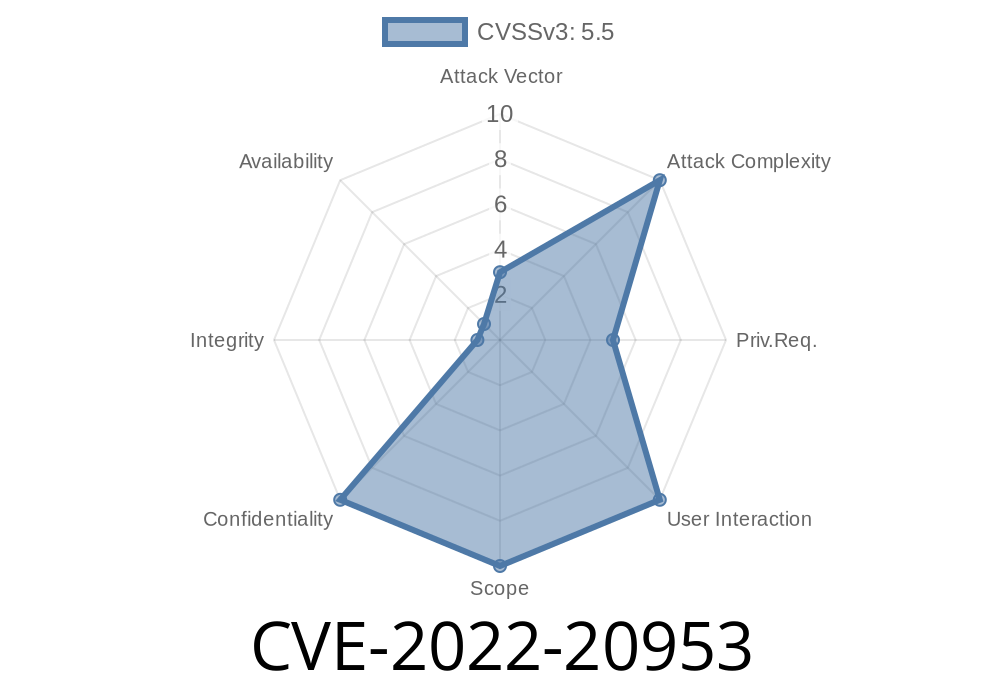Cisco TelePresence Collaboration Endpoint (CE) Software and Cisco RoomOS Software are widely used solutions to enable remote collaboration and communication in businesses and organizations. Recently, multiple vulnerabilities have been identified in these software products that could potentially expose sensitive data, allow path traversal attacks, or enable an attacker to write arbitrary files on an affected device. This long-read post discusses the details of these vulnerabilities (CVE-2022-20953) and links to the original references and exploit details.
Vulnerability Details
The vulnerabilities identified in Cisco TelePresence Collaboration Endpoint (CE) Software and Cisco RoomOS Software are as follows:
1. Path Traversal Attacks: These attacks occur when an attacker inputs malicious data to manipulate the path's navigation and access unauthorized file systems and directories. In this case, an attacker could exploit the vulnerability by sending a specially crafted request to the affected device, allowing the attacker to read files outside of the intended directory, potentially gaining access to sensitive data.
2. Sensitive Data Exposure: The affected software incorrectly stores files containing sensitive data (e.g., credentials, encryption keys) in locations that are accessible to unauthenticated users. This could allow an attacker to access the files and potentially use them for malicious purposes.
3. Arbitrary File Writes: An attacker can exploit the vulnerability by sending a specially crafted request to the affected device and write arbitrary files on it, potentially executing malicious code or causing a denial of service (DoS) condition.
For more information on these vulnerabilities, visit the following references
- Cisco Security Advisory
- CVE-2022-20953 Details
Exploit Details
To illustrate the path traversal vulnerability, let's create a simple example using Python's 'requests' library:
import requests
url = "https://TARGET_IP_OR_URL/vulnerable_endpoint";
payload = "../../../sensitive/data"
# Sending the path traversal request
response = requests.get(url + payload)
if response.status_code == 200:
print("Path traversal attack successful")
print("Received data: ", response.text)
else:
print("Attack unsuccessful, status code:", response.status_code)
In this code snippet, the attacker targets a vulnerable endpoint on the device and sends a crafted payload to modify the file's path, potentially gaining unauthorized access to sensitive files.
Note that this is only an example to show the concept of the attack. Actual exploitation may require a thorough understanding of the target and a tailored approach based on the specific software version, network configuration, and security measures in place.
Recommendations
Organizations and businesses using Cisco TelePresence Collaboration Endpoint (CE) Software and Cisco RoomOS Software are encouraged to apply the appropriate patches and updates provided by Cisco to mitigate these vulnerabilities. In addition to applying patches and updates, it is crucial to configure and monitor your network security settings to ensure the ongoing protection of your devices and data.
Conclusion
The CVE-2022-20953 advisory highlights the critical need to keep software and devices up-to-date and secured to protect sensitive data and organizational infrastructure from potential attacks. By keeping track of the latest security advisories, applying patches and updates, and maintaining a high level of network security, organizations can reduce the risk of these vulnerabilities and maintain a secure and productive environment for remote collaboration.
Timeline
Published on: 10/26/2022 15:15:00 UTC
Last modified on: 10/31/2022 17:38:00 UTC
